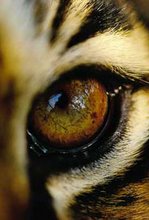The Juan Fernandez Archipelago is the pointy top part of a volcanic mountain chain – on the cliffs from a boat you can see the stratifications as layers of lava were layed down and numerous conduits/pipes that cut straight up through the hills. Since the islands have always been completely isolated numerous unique species have evolved here that are found nowhere else in the world – including the Juan Fernandez Firecrown, the hummingbird which is the focus of the study. Since people have discovered the island they have introduced numerous species which compete with native vegetation (such as Maqui and bramble), contribute to soil erosion (grazing animals including wild goats and rabbits) and animals that directly harm native birds (cats, rats and coatis). People have also driven a native tree, the Sophora, nearly to extinction due to logging. The trees that now survive are those that were to twisted or innaccessible to be useful, and it takes several hours walking from town to find them. When they are in bloom the hummingbirds flock to the multitude of yellow flowers for nectar so that standing by the tree trunk is like being in a golden aviary. The only nearly terrestrial vertebrates native to the islands other than birds are an endemic species of fur seal – these were hunted for their meat and at one point considered extinct before an isolated population was discovered. The seals are now thriving and a few of them can usually be seen with their flippers raised out of the water, messing about near the shore in front of the town.
The other species of hummingbird on the island – the continental species which is probably the sister-species of the endemic – appears to have made it to the archipelago alone in the last couple of hundred years. Much of our work also applies to these birds and part of the aim of the study is to examine possible competative interactions and to determine whether the vegetation changes caused by humans may be of benefit to the continental species over the endemic. Behavioural observations of birds that enter specified areas during half hour periods will help determine possible differences in feeding strategy, energy budgets, and preffered food sources between the larger endemic and smaller contintal firecrowns. Aggressive interactions between birds are also noted. Ok, so now I sound like a journal article – jeez. Maybe it’s better to say: we sit around in the cold, someimtes in mud, and watch the pretty birdies. :-) Mud problems are solved by the use of waterproof trousers which are an awesome invention – like clothes you can get as dirty if you want and don’t have to wash! The cold is countered by numerous layers – although after hiking up a steep hill, the bottom layer usually stays horribly damp which doesn’t help. The birdies really are very pretty though. The endemic males are the biggest – completely brick red with darker almost-black on the edges of their wings, and when they face you head on a flash of irridescent gold or red on their forehead which gives them their name. The Green-Backed Firecrown males also posses this red crest but apart from this they are small and inconspicuous – dull green fading to grey underneath – much better camouflaged from a history of having to cope with predators. The endemic females are my favourite though –they are irridescent emerald green on top, and bright white underneath and on the edges of their tails when they fan them out. When sitting in a forest clearing you often hear the buzz of the female’s wings before spotting them doing crazy acrobatics in the air while feeidng on insects.
These humminbirds feed on both nectar and insects – and so we research both of these food sources. We count flowers on trees, determine nectar production, and trap and sort insects from various locations. Other work includes measuring trees and finding, measuring and regularly checking nests of both species.
There we go then – blah blah blah. I think next post I’ll go back to how pretty everything is.


Yay - Shamini talked about rocks :-)
ReplyDeleteMy project at the moment involves the Juan Fernandez archipelago and what happens when it subducts under Chile.
See you soon
x
The rocks were awesome - I needed your geology knowledge!
ReplyDeleteIf the archipelago even tries to do any of that subducting business we will build a big rope and crane thing to pull it back out - because it is too biologically valuable to melt!